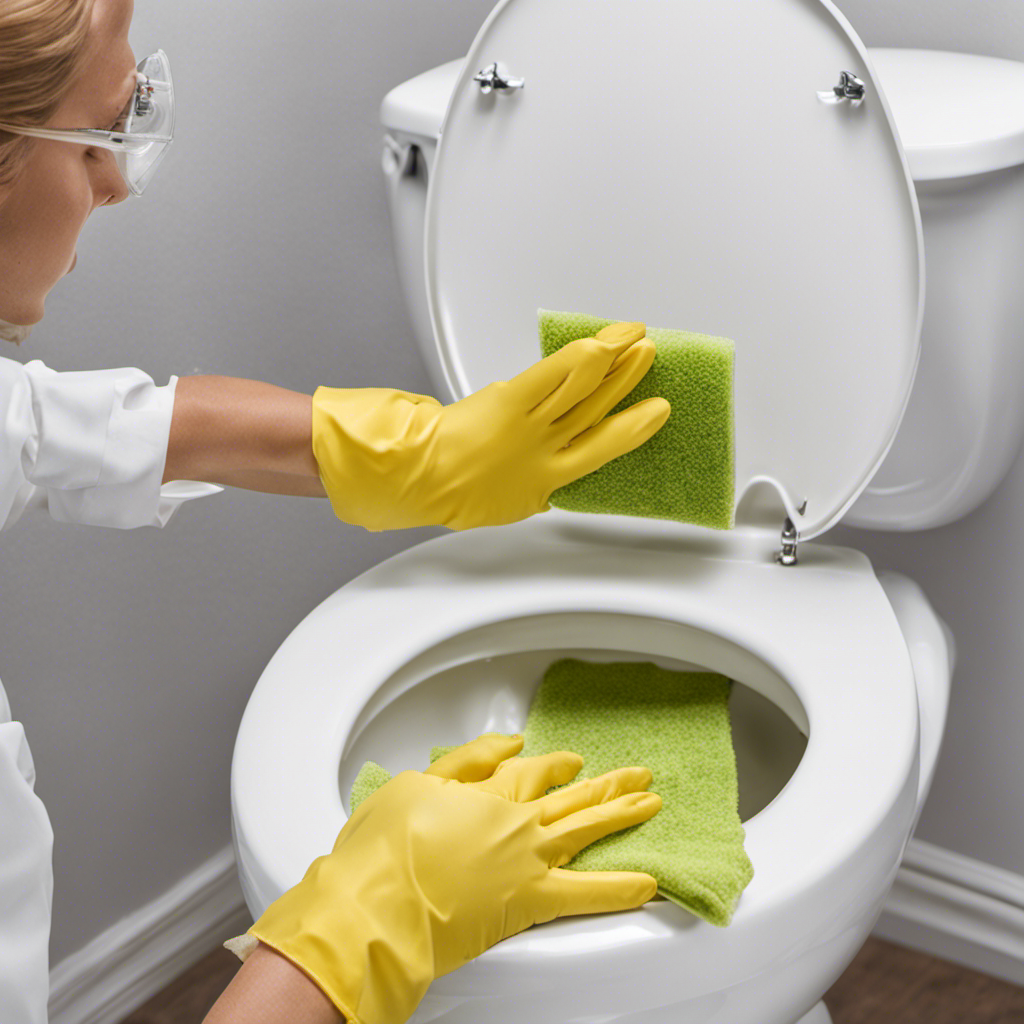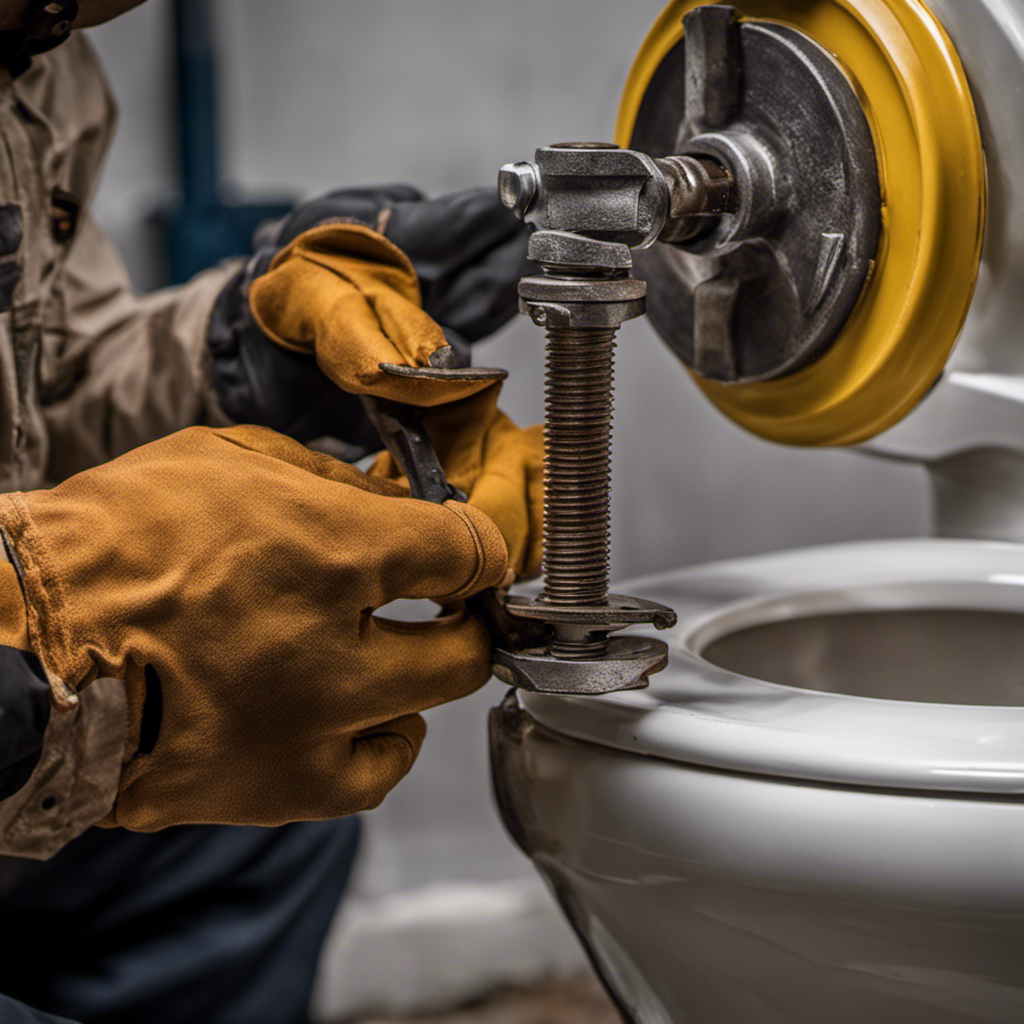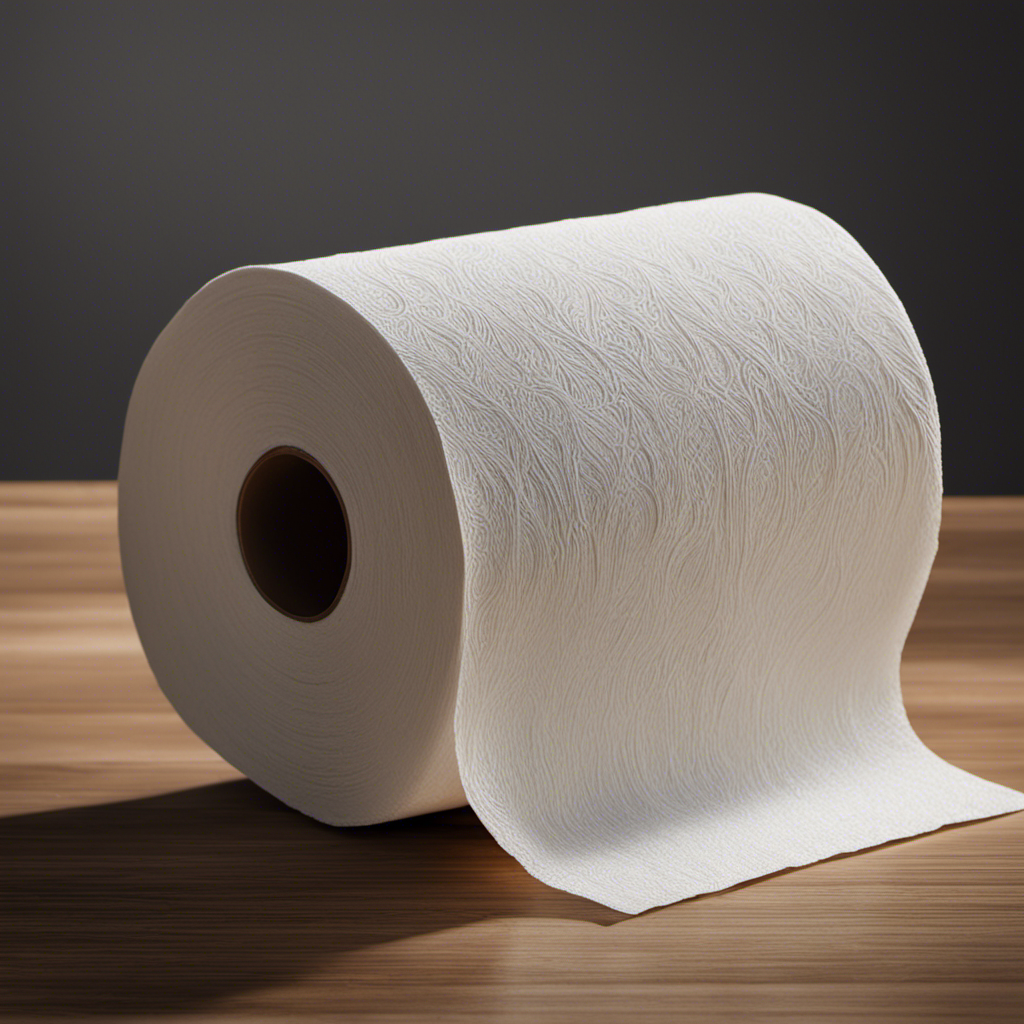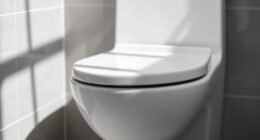I’ve always heard that an ounce of prevention is worth a pound of cure, and when it comes to mold in your toilet tank, that adage couldn’t be more true. Dealing with mold can be a hassle, but with the right knowledge and a little elbow grease, you can easily remove it and keep your toilet tank clean and mold-free.
In this article, I’ll guide you through the step-by-step process of removing mold from your toilet tank, as well as provide tips for preventing future growth.
Let’s get started!
Key Takeaways
- Mold in toilet tanks can cause respiratory issues and allergies.
- Proper ventilation and moisture control are crucial in preventing mold growth.
- White vinegar is an effective solution for killing mold spores.
- Regular cleaning and maintenance are necessary to prevent mold growth in the toilet tank.
Understanding the Causes of Mold in Toilet Tanks
Understanding the causes of mold in toilet tanks can help prevent future growth. Not only does mold in toilet tanks create an unsightly appearance, but it also poses health risks. Mold releases spores into the air, which can irritate the respiratory system and trigger allergies or asthma.
To minimize these health risks, proper ventilation is essential. Ensuring that there is adequate airflow in the bathroom can help reduce the moisture levels that promote mold growth. Opening windows or using exhaust fans after showering or using the toilet can help remove excess moisture from the air.
Preparing to Remove Mold From the Toilet Tank
Before starting, it’s important to gather all the necessary cleaning supplies. Here are three essential toilet tank cleaning tools you’ll need to effectively remove mold:
- Scrub brush: A sturdy scrub brush with stiff bristles will help you scrub away the stubborn mold and grime from the tank walls and surfaces.
- White vinegar: This natural cleaning agent is highly effective in killing mold spores and preventing future growth. Mix equal parts of vinegar and water in a spray bottle for easy application.
- Rubber gloves: Protect your hands from the cleaning solution and mold by wearing rubber gloves. They’ll also provide a better grip on the scrub brush.
To begin removing mold from the toilet tank, start by spraying the vinegar and water solution onto the affected areas. Let it sit for a few minutes to allow the vinegar to penetrate and kill the mold.
Then, use the scrub brush to vigorously scrub away the mold, paying special attention to any hard-to-reach areas. Rinse the tank thoroughly with clean water, ensuring all traces of mold and cleaning solution are gone. Repeat the process if necessary.
Step-By-Step Guide to Cleaning Mold From the Toilet Tank
Start by spraying the vinegar and water solution onto the affected areas and let it sit for a few minutes. This will help loosen the mold and make it easier to remove. After letting the solution sit, use a scrub brush or sponge to scrub away the mold. Be sure to scrub all surfaces thoroughly, including the walls, bottom, and any crevices. Once you have scrubbed the mold away, rinse the tank with clean water to remove any leftover residue. To ensure effective mold removal, it is important to regularly maintain your toilet tank. Here is a table detailing some simple maintenance tasks to prevent mold growth:
| Task | Frequency | Tools Needed |
|---|---|---|
| Clean the toilet tank | Monthly | Vinegar, Water, Brush |
| Check for leaks | Quarterly | Flashlight |
| Inspect and replace seals | Annually | Screwdriver |
| Use a tank cleaner | Biannually | Tank cleaner |
Preventing Mold Growth in the Toilet Tank
To prevent the growth of mold in your toilet tank, regularly clean and inspect it using the maintenance tasks provided in the table. Mold can be a persistent and unsightly problem in the bathroom, but with the right techniques, you can keep it at bay.
Here are three essential mold prevention techniques for maintaining a clean and mold-free toilet tank:
-
Regular cleaning: Use a mild detergent or vinegar solution to clean the inside of the tank at least once a month. Scrub the walls and any visible mold spots thoroughly.
-
Proper ventilation: Ensure that your bathroom has adequate ventilation to prevent excess moisture buildup. Use exhaust fans or open windows during and after showering to promote air circulation.
-
Keep the lid closed: Closing the lid when flushing can help prevent mold spores from entering the tank and multiplying. It also reduces the exposure of the water in the tank to airborne mold spores.
Additional Tips for Maintaining a Mold-Free Toilet Tank
One way to prevent the growth of mold in your toilet tank is by regularly checking the water supply for any leaks.
In addition to this, there are a few other tips I’ve found helpful for maintaining a mold-free toilet tank.
Firstly, make sure to thoroughly clean the tank at least once a month. You can use a mixture of bleach and water to disinfect the tank and kill any existing mold.
Secondly, consider using a toilet tank tablet or cleaner that is specifically designed to prevent mold and bacteria growth. These products can help keep your tank clean and fresh between regular cleanings.
Lastly, ensure proper ventilation in your bathroom to prevent excess moisture, which can contribute to mold growth.
Conclusion
In conclusion, tackling mold in your toilet tank may seem like a daunting task, but with the right knowledge and tools, it can be easily managed.
By understanding the causes of mold growth and taking proactive measures to prevent it, you can maintain a clean and hygienic toilet tank.
Remember to regularly clean and disinfect your toilet tank to keep mold at bay.
With these practical tips, you can enjoy a mold-free toilet tank and a pleasant bathroom experience.










